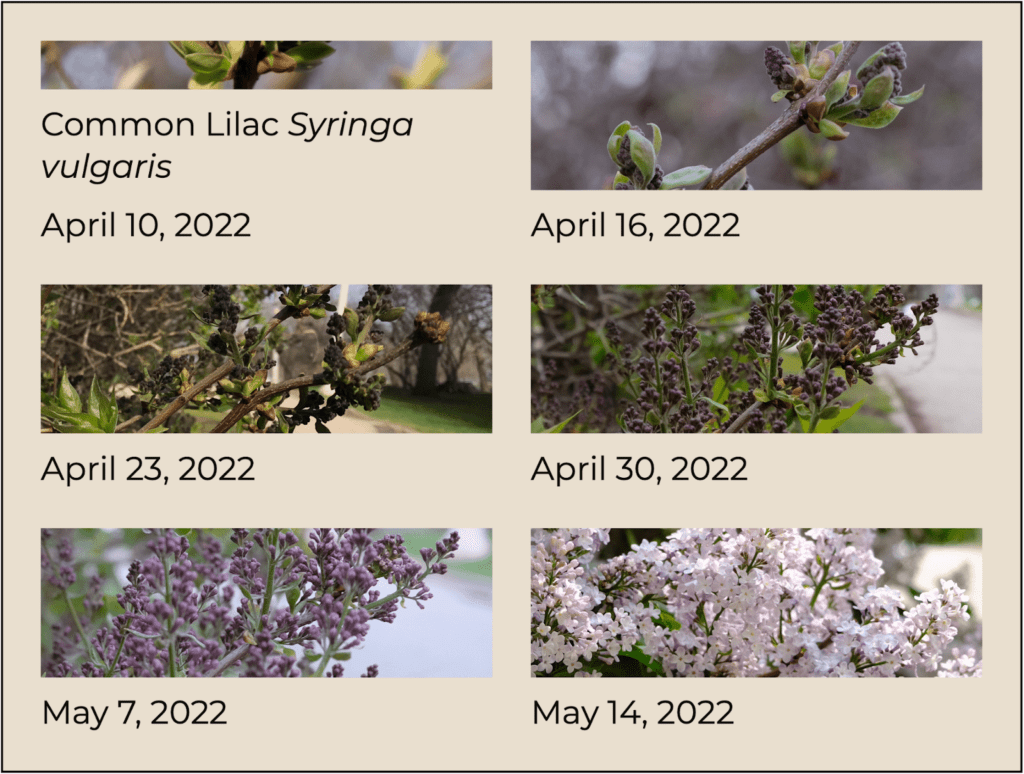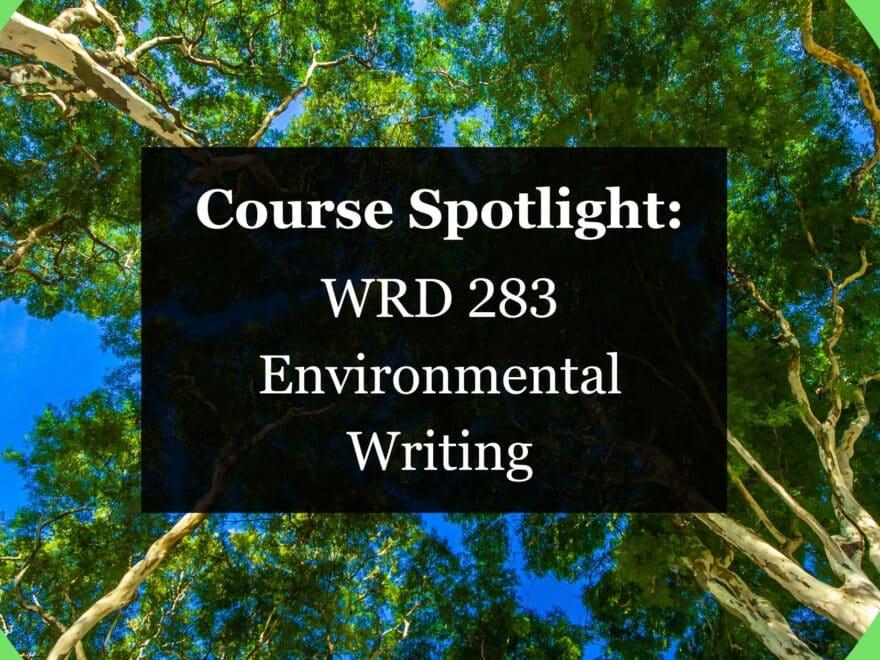Scheduled intentionally in Spring Quarter as changes in the environment become more easily perceptible, WRD 283 Environmental Writing, taught by Dr. Jason Kalin, offers more than just Social, Cultural, Behavioral Inquiry (SCBI) credit. It offers a chance to grow along with nature into new perspectives.
What is Environmental Writing?
In this course, environmental writing is writing about the environment and nature, but with the rhetorical understanding that the environment and nature are not just “out there” – external to or separate from humans. The class tries to teach that we are not separate from our environment. We are nature and nature is us. As Robin Wall Kimmerer writes in Braiding Sweetgrass, “All flourishing is mutual.”
What are the course goals and learning outcomes?
Although most people, including most DePaul students, express deep concern about environmental issues, many people have a kind of “nature blindness,” or what is often referred to as “plant blindness,” such as seeing all the plants around us as the general “plant” rather than a particular species. Similarly, many students often suggest that there is no “nature” in Chicago so that as Chicagoans we must go somewhere else – somewhere “away,” “pristine,” or “wild” – to be with nature. This course aims to change this nature blindness by studying our “urban environment” more closely. By engaging with environmental rhetoric and philosophy, this course offers students a fundamental shift in understanding the relations among “humans” and “nature.” Concepts such as deep ecology teach us that we are implicated in nature, that everything is connected, and that there is no “away.” As such, this course’s inquiry is also rooted in the Anthropocene, the geological event marked by human-induced climate change.
Many people, especially young people, have strong environmental emotions marked by sadness, depression, despair, and grief that nothing can be done to stop climate change. In this course, we seek to acknowledge that grief, but also work through it into wonder, happiness, and joy with the environment around us. To do so, we practice phenology, or the study of behavioral changes emerging from seasonal change. Students, for example, will practice the “arts of noticing,” to notice when daffodils, crocuses, and tulips begin to sprout and bloom (which blooms first?) or to notice when red-winged blackbirds arrive in their dooryards. Dr. Kalin hopes practicing phenology will increase the students’ awareness, engagement, curiosity, and wonder about the world around them. By attending to both negative and positive emotions at once, we can become better co-inhabitants of the earth.
What is Dr. Kalin’s inspiration for teaching WRD 283 Environmental Writing?
Having been interested in environmental rhetorics for many years, Dr. Kalin had seen WRD 283 on the course list since 2012 and wanted to figure out how to teach it. In 2018, when he came across a book called Ground Truth: A Guide to Tracking Climate Change at Home by Mark Hineline, he learned more about phenology. As the central text of the course, Ground Truth shows how students can actually see climate change at home, making it concrete and perceptible.
One example of a phenological observation Dr. Kalin shares:

A common lilac blossoming
Common Lilac
Syringa vulgaris
Lincoln Park, Chicago
How is the course structured?
The first couple weeks of the course, students are introduced to phenology by reading Ground Truth as the backbone of their work. Then, the class shifts into topics like environmental philosophy, ecological thinking, unraveling the urban/nature dichotomies. Finally, the course moves on to discuss the Gaia hypothesis, environmental justice, indigenous ecological knowledge and how that can inform our understanding of nature, as well as how to pay attention to birds, plants, insects, mammals, and nature all around us.
What major projects will students complete?
The main project assigned to students in this course is to create what is called a phenological trail. Early in the quarter, students must create a trail through their regularly traveled paths where they will observe seasonal changes. Each week they will complete a phenological journal where they track changes and use their observations to learn more about the nature close to them.
Second, students will use their observations to do a deeper dive on one of the species they’re learning about and complete a field report. They will do more research to understand the history of the species and how it is impacted by global warming. Will the species disappear? Will it thrive? Students must determine what the research suggests.
Finally, students will come back to their phenological trail and do a second version where they track more changes with their heightened knowledge of the nature in and around them.
Who should take this course and why?
Dr. Kalin is certain: everyone should take this course. From students who are interested in the environment to students who have never really thought about it, this course is about understanding our place in the world and what we can do.
Final thoughts…
Enrolling in WRD 283 Environmental Writing means gaining an opportunity to learn environmental rhetoric and philosophy to develop a deeper understanding of the complex relationship between humans and nature. Develop connection with the world around you, awaken a sense of wonder and responsibility towards the planet, and use your new knowledge to advocate for meaningful change. Enroll in WRD 283 Environmental Writing this Spring Quarter.
